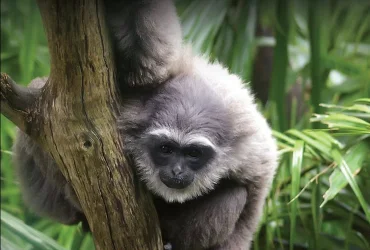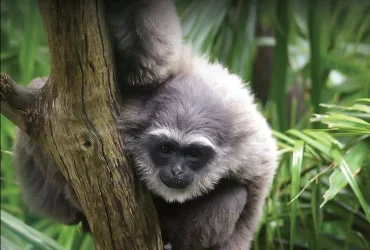Volume 2 | Number 2 | November 2010
 v2i2.30
v2i2.30ISSN: 1800-427X (print)
eISSN: 1800-427X (online)
DOI:10.47605/tapro.v2i2.30
Submitted date: 29 March 2010
Accepted date: 01 January 2011
Published date: 30 April 2011
Pp. 72–85, Pls. 1–4.
HERPETOFAUNA OF SOUTHERN WESTERN GHATS, INDIA − REINVESTIGATED AFTER DECADES
S.R. Chandramouli* & S.R. Ganesh
*Corresponding author. E-mail: findthesnakeman@gmail.com
Abstract
We recorded amphibians and reptiles in two hill ranges, the Cardamom Hills and Ponmudi Hills of the southern Western Ghats, India, for a period of four months each. In all, 74 species, comprising of 28 species of amphibians belonging to 11 genera and 8 families and 46 species of reptiles, belonging to 27 genera and 9 families were recorded. Aspects deviating from literature have been discussed. A comparison of the results of the present study with that of the earlier works from the same region is also provided.
Key words : Amphibians, Cardamom hills, herpetology, Ponmudi hills, reinvestigation, reptiles
Section Editor: Aaron Bauer
eISSN: 1800-427X (online)
DOI:10.47605/tapro.v2i2.30
Submitted date: 29 March 2010
Accepted date: 01 January 2011
Published date: 30 April 2011
Pp. 72–85, Pls. 1–4.
HERPETOFAUNA OF SOUTHERN WESTERN GHATS, INDIA − REINVESTIGATED AFTER DECADES
S.R. Chandramouli* & S.R. Ganesh
*Corresponding author. E-mail: findthesnakeman@gmail.com
Abstract
We recorded amphibians and reptiles in two hill ranges, the Cardamom Hills and Ponmudi Hills of the southern Western Ghats, India, for a period of four months each. In all, 74 species, comprising of 28 species of amphibians belonging to 11 genera and 8 families and 46 species of reptiles, belonging to 27 genera and 9 families were recorded. Aspects deviating from literature have been discussed. A comparison of the results of the present study with that of the earlier works from the same region is also provided.
Key words : Amphibians, Cardamom hills, herpetology, Ponmudi hills, reinvestigation, reptiles
Section Editor: Aaron Bauer
 v2i2.29
v2i2.29ISSN: 1800-427X (print)
eISSN: 1800-427X (online)
DOI:10.47605/tapro.v2i2.29
Published date: 30 April 2011
Pp. 65–71
EDITORIAL : Asian Agamid lizards (Agamidae, Acrodonta, Sauria, Reptilia) : Phylogenetic and taxonomic diversity
Natalia B. Ananjeva
Section Editor: Taprobanica, the journal of Asian Biodiversity
The Southeast Asian-Indonesian and Australian-New Guinean tectonic plates have both been hypothesized to be centers of origin of agamid lizards. The Asian continent housed a number of hotspots of plant and animal diversity and endemism, important for the conservation of biodiversity on a global scale. There are many threatened areas in tropical Asia in terms of destruction of tropical rain forest as an environment with a unique biota and herpetofauna in particular. New intensive studies of the Asian fauna as well as new opportunities offered by molecular methods make it clear that taxonomic diversity is underestimated, especially in South and Southeast Asia. The aim of this paper is to show the taxonomic diversity of different evolutionary lineages and the distribution of agamids by sub region in Asia.
eISSN: 1800-427X (online)
DOI:10.47605/tapro.v2i2.29
Published date: 30 April 2011
Pp. 65–71
EDITORIAL : Asian Agamid lizards (Agamidae, Acrodonta, Sauria, Reptilia) : Phylogenetic and taxonomic diversity
Natalia B. Ananjeva
Section Editor: Taprobanica, the journal of Asian Biodiversity
The Southeast Asian-Indonesian and Australian-New Guinean tectonic plates have both been hypothesized to be centers of origin of agamid lizards. The Asian continent housed a number of hotspots of plant and animal diversity and endemism, important for the conservation of biodiversity on a global scale. There are many threatened areas in tropical Asia in terms of destruction of tropical rain forest as an environment with a unique biota and herpetofauna in particular. New intensive studies of the Asian fauna as well as new opportunities offered by molecular methods make it clear that taxonomic diversity is underestimated, especially in South and Southeast Asia. The aim of this paper is to show the taxonomic diversity of different evolutionary lineages and the distribution of agamids by sub region in Asia.
Hubungi Kami
The ultimate aim of the journal is to provide an effective medium for communication of the latest and best scientific information.
Copyright © 2020 Taprobanica. All Rights Reserved
Jasa Pembuatan Website by IKT




